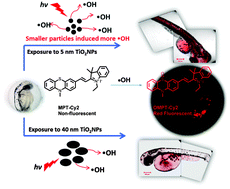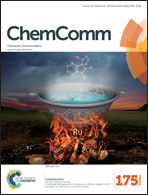A sensitive fluorescent sensor for the detection of endogenous hydroxyl radicals in living cells and bacteria and direct imaging with respect to its ecotoxicity in living zebra fish†
Abstract
We have synthesized a novel fluorescent probe, MPT-Cy2, which shown a high potential for imaging of endogenous ˙OH in living cells and various types of bacteria. In addition, it is an excellent sensor for in vivo imaging of ˙OH generated following treatment with TiO2NPs in zebra fish.


 Please wait while we load your content...
Please wait while we load your content...